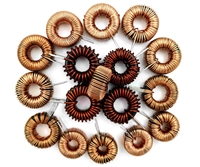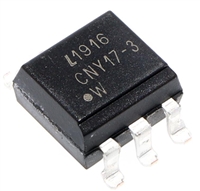CY7C1663KV18/CY7C1665KV18
during the data portion of a write latches the data being
presented and writes it into the device. Deasserting the Byte
Write Select input during the data portion of a write enables the
data stored in the device for that byte to remain unaltered. This
feature can be used to simplify read, modify, or write operations
to a byte write operation.
impedance. The value of RQ must be five times the value of the
intended line impedance driven by the SRAM, the allowable
range of RQ to guarantee impedance matching with a tolerance
of ±15 percent is between 175 and 350 , with VDDQ = 1.5 V.
The output impedance is adjusted every 1024 cycles upon power
up to account for drifts in supply voltage and temperature.
Concurrent Transactions
Echo Clocks
The read and write ports on the CY7C1663KV18 operates
completely independently of one another. As each port latches
the address inputs on different clock edges, the user can read or
write to any location, regardless of the transaction on the other
port. If the ports access the same location when a read follows a
write in successive clock cycles, the SRAM delivers the most
recent information associated with the specified address
location. This includes forwarding data from a write cycle that
was initiated on the previous K clock rise.
Echo clocks are provided on the QDR II+ to simplify data capture
on high speed systems. Two echo clocks are generated by the
QDR II+. CQ is referenced with respect to K and CQ is
referenced with respect to K. These are free running clocks and
are synchronized to the input clock of the QDR II+. The timing
for the echo clocks is shown in the Switching Characteristics on
page 24.
Valid Data Indicator (QVLD)
Read access and write access must be scheduled such that one
transaction is initiated on any clock cycle. If both ports are
selected on the same K clock rise, the arbitration depends on the
previous state of the SRAM. If both ports are deselected, the
read port takes priority. If a read was initiated on the previous
cycle, the write port takes priority (as read operations can not be
initiated on consecutive cycles). If a write was initiated on the
previous cycle, the read port takes priority (as write operations
can not be initiated on consecutive cycles). Therefore, asserting
both port selects active from a deselected state results in
alternating read or write operations being initiated, with the first
access being a read.
QVLD is provided on the QDR II+ to simplify data capture on high
speed systems. The QVLD is generated by the QDR II+ device
along with data output. This signal is also edge-aligned with the
echo clock and follows the timing of any data pin. This signal is
asserted half a cycle before valid data arrives.
PLL
These chips use a PLL that is designed to function between
120 MHz and the specified maximum clock frequency. During
power up, when the DOFF is tied high, the PLL is locked after
20 s of stable clock. The PLL can also be reset by slowing or
stopping the input clocks K and K for a minimum of 30 ns.
However, it is not necessary to reset the PLL to lock to the
desired frequency. The PLL automatically locks 20 s after a
stable clock is presented. The PLL may be disabled by applying
ground to the DOFF pin. When the PLL is turned off, the device
behaves in QDR I mode (with one cycle latency and a longer
access time).
Depth Expansion
The CY7C1663KV18 has a port select input for each port. This
enables for easy depth expansion. Both port selects are sampled
on the rising edge of the positive input clock only (K). Each port
select input can deselect the specified port. Deselecting a port
does not affect the other port. All pending transactions (read and
write) are completed before the device is deselected.
Programmable Impedance
Connect an external resistor, RQ, between the ZQ pin on the
SRAM and VSS to enable the SRAM to adjust its output driver
Document Number: 001-44060 Rev. *M
Page 7 of 31










 压敏电阻器在直流电路中的过压保护应用探讨
压敏电阻器在直流电路中的过压保护应用探讨

 电感耐压值及其与电感大小的关系
电感耐压值及其与电感大小的关系

 CNY17F光耦合器:特性、应用、封装、引脚功能及替换型号解析
CNY17F光耦合器:特性、应用、封装、引脚功能及替换型号解析

 DS1307资料解析:特性、引脚说明、替代推荐
DS1307资料解析:特性、引脚说明、替代推荐
